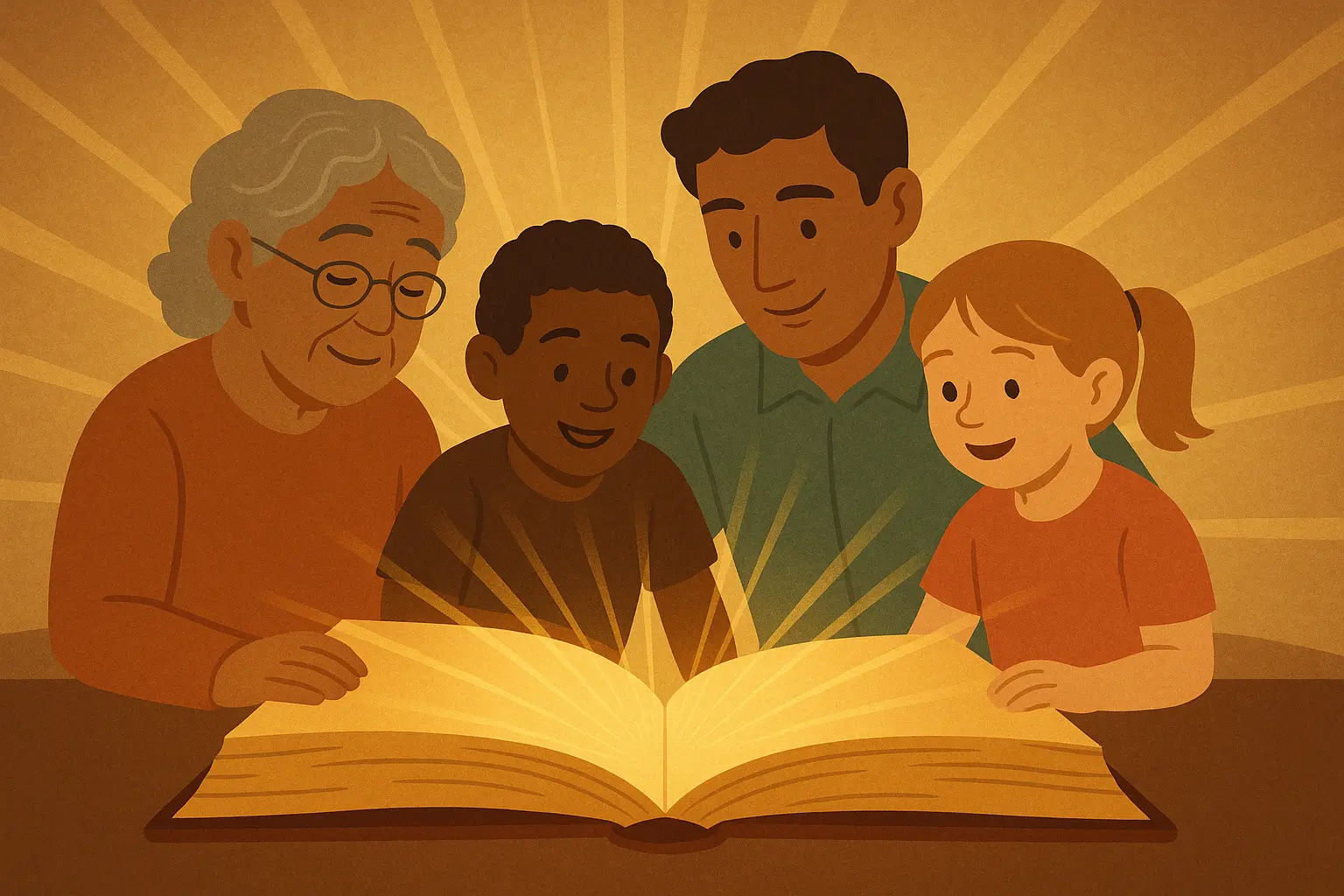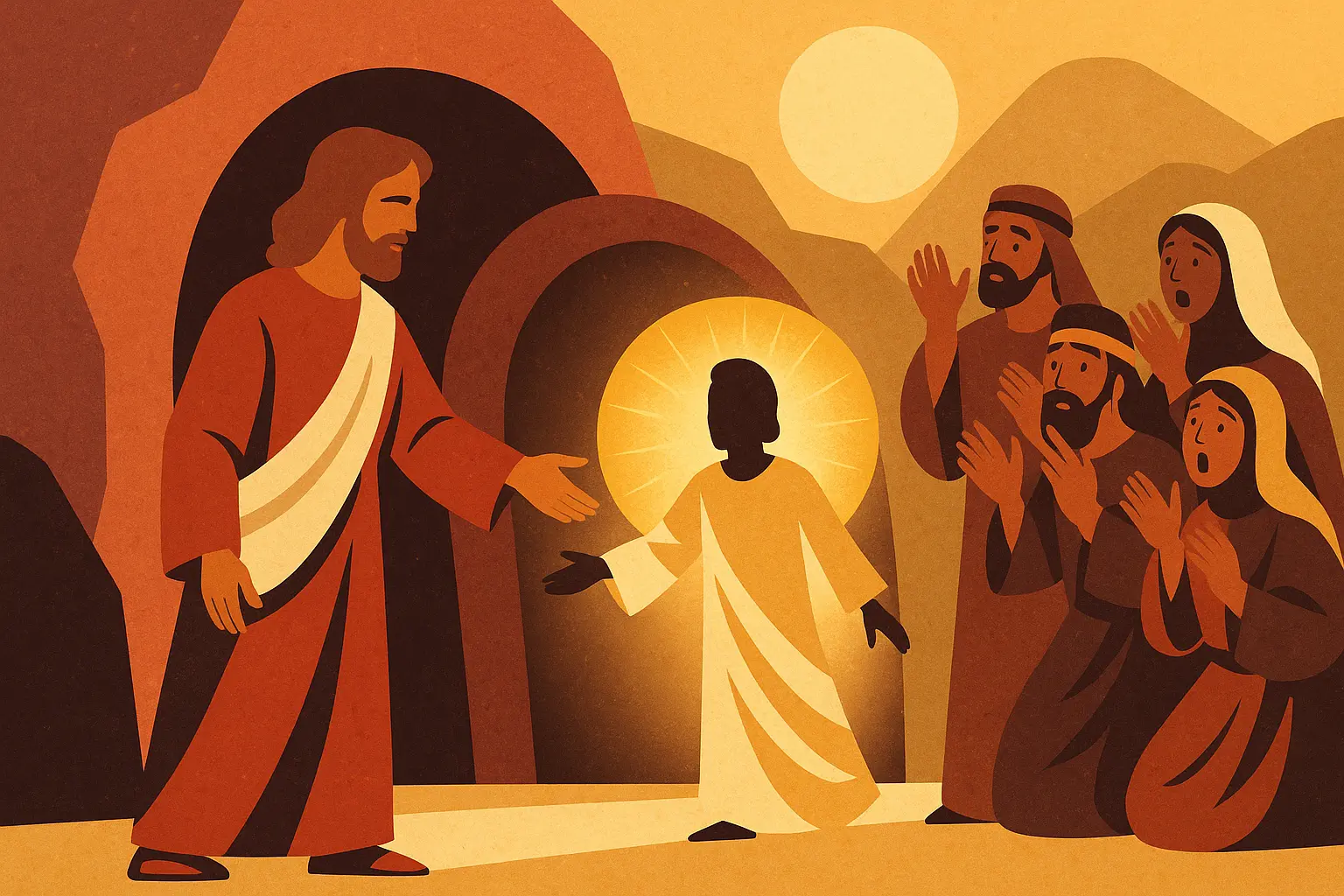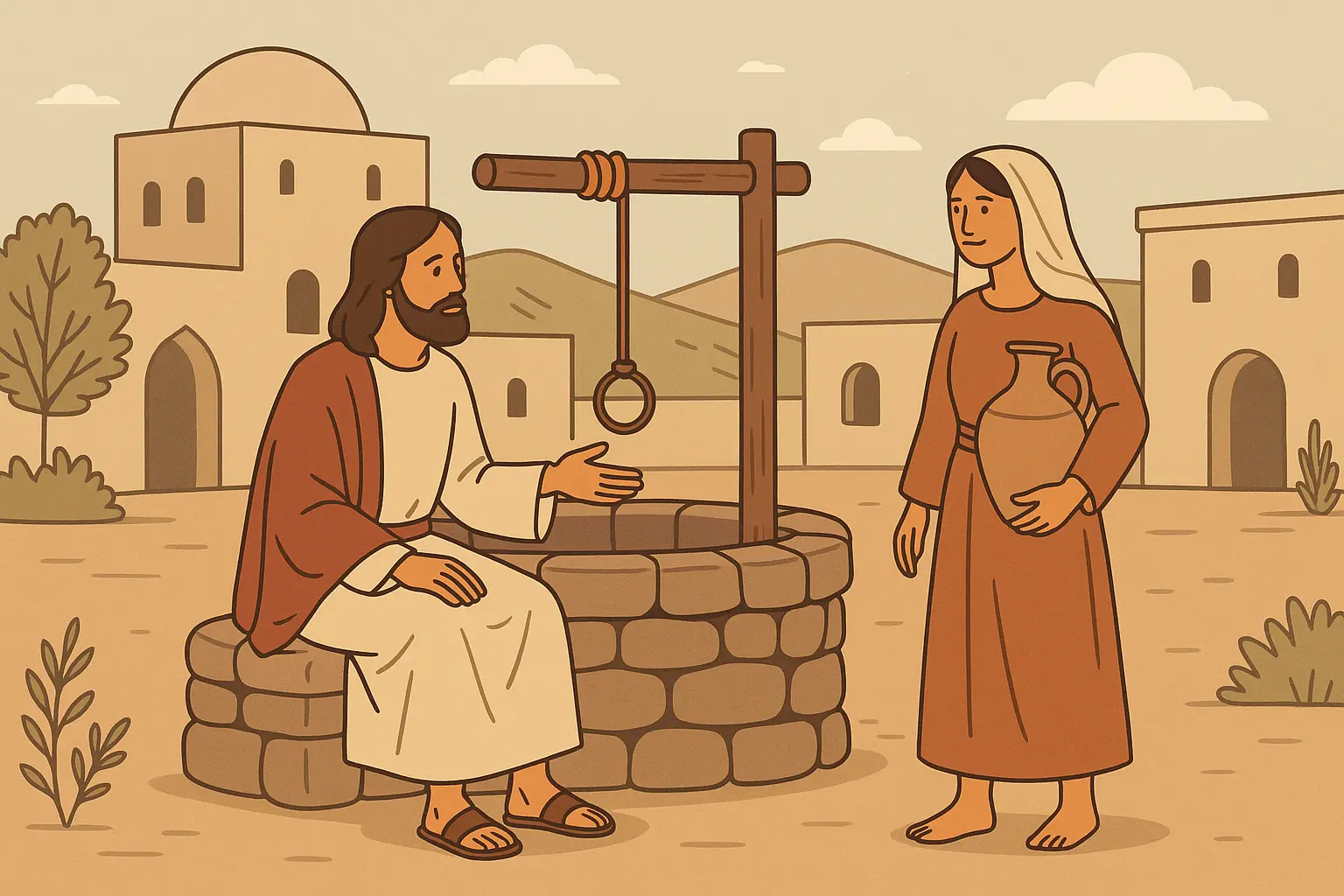You know what’s wild? Jesus was basically the master storyteller of his time. He didn’t give boring lectures or complicated theological dissertations. Instead, he told stories that regular people could actually understand and remember.
Growing up in a household where bedtime stories were sacred, I remember my grandmother reading these same narratives that have captivated audiences for over two millennia. According to The Jesus Film Project, Jesus taught in parables throughout his ministry, using storytelling as his primary method of communication. Here’s the thing about Jesus stories – they just stick with you. Whether you’re a believer or not, these tales have something that speaks to people across all walks of life.
Whether you’re seeking spiritual guidance, studying literature, or crafting your own narratives, understanding these 25 essential Jesus stories provides invaluable insight into the art of meaningful storytelling.

Table of Contents
-
What Makes Jesus Stories So Compelling for Modern Readers
-
Biblical Foundation Stories: The Core Gospel Narratives
-
1. The Nativity Story
-
2. The Baptism by John
-
3. The Temptation in the Wilderness
-
4. The Crucifixion and Resurrection
-
-
Teaching and Parable Stories: Lessons Through Narrative
-
5. The Good Samaritan
-
6. The Prodigal Son
-
7. The Sermon on the Mount
-
8. The Feeding of the Five Thousand
-
-
Miracle and Healing Stories: Power Through Compassion
-
9. Walking on Water
-
10. Healing the Blind Man
-
11. Raising Lazarus from the Dead
-
12. The Wedding at Cana
-
-
Relationship and Character Stories: Human Connection and Growth
-
13. Jesus and Mary Magdalene
-
14. Jesus and Peter’s Denial
-
15. Jesus and the Samaritan Woman at the Well
-
16. Jesus and Zacchaeus
-
-
Modern Interpretations and Retellings: Ancient Stories for Contemporary Audiences
-
17. Jesus Christ Superstar Narratives
-
18. The Jesus Film Project Adaptations
-
19. Children’s Bible Story Adaptations
-
20. Historical Fiction Interpretations
-
-
Contemporary Applications: Jesus Stories for Today’s World
-
21. “What Would Jesus Do?” Modern Scenarios
-
22. Social Justice Jesus Stories
-
23. Interfaith Dialogue Stories
-
24. Personal Testimony Integration Stories
-
25. Jesus in Popular Culture Analysis
-
-
How to Choose the Right Jesus Stories for Your Purpose
-
How Nairrate Can Transform Your Jesus Story Creation
TL;DR
-
Jesus stories come in six different flavors – from the original biblical accounts to modern-day applications
-
Each story hits different – some are great for teaching kids, others work better for deep adult conversations
-
Context is everything – understanding the backstory helps you pick the right tale for your situation
-
These ancient stories are getting fresh makeovers that make them super relevant for today’s world
-
They’re basically masterclasses in character development and how to resolve conflict in meaningful ways
-
Whether you’re studying, teaching, or creating your own content, these stories are goldmines for authentic, powerful narratives
What Makes Jesus Stories So Compelling for Modern Readers
The people in these stories? They’re dealing with the same stuff we are – family drama, money problems, feeling left out, making bad choices. That’s why a story from 2,000 years ago can still make you go “Oh man, that’s totally me.”
These narratives pack a punch because they mix everyday human experiences with life-changing lessons. They’re about transformation, getting second chances, fighting for what’s right, and love winning out over hate. Pretty universal stuff, right?
What makes them really special is that the characters feel real. They mess up, they doubt, they get scared – just like us. But they also find hope and meaning in the middle of their struggles. Understanding what makes these narratives compelling requires examining their story theme examples and how they’ve influenced storytelling across cultures and generations.
|
Story Element |
Why It Resonates |
Modern Application |
|---|---|---|
|
Universal Themes |
Love, forgiveness, redemption speak to all cultures |
Cross-cultural storytelling and global narratives |
|
Character Transformation |
People change through encounters with divine love |
Character arc development in fiction and film |
|
Social Justice |
Care for marginalized and oppressed remains relevant |
Contemporary social activism and community work |
|
Moral Complexity |
Characters face real ethical dilemmas |
Nuanced storytelling that avoids simple good vs. evil |
|
Hope in Adversity |
Light emerges from darkness in every narrative |
Inspirational content for challenging times |
When you’re picking Jesus stories for your reading, study, or creative projects, there are a few things to keep in mind. First, context matters big time. Understanding what life was like in first-century Palestine helps you get why certain stories hit so hard back then – and why they still matter now.
Take “The Good Samaritan,” for example. Back in Jesus’s day, Jews and Samaritans couldn’t stand each other. So when Jesus made the Samaritan the hero, it was like… well, imagine if today he told a story where someone from the political party you can’t stand was the one who helped you when you were in trouble. Same message – love crosses all boundaries – but it hits different depending on your situation.
You also want to think about whether you need historical accuracy or if creative storytelling is okay for your purpose. Are you teaching Sunday school or writing a novel? The approach matters.
And let’s be real about your audience. Some of these stories work great for kids, while others need some serious adult conversation to really unpack. The quality of the storytelling matters too – a well-told story with real characters and smooth flow will stick with people way longer than something that feels forced or preachy.

Biblical Foundation Stories: The Core Gospel Narratives
These are the big ones – the stories that pretty much everyone knows, even if they’ve never cracked open a Bible. They’re the foundation of Christianity and carry serious weight across all different denominations. These Jesus stories form the backbone of Christian belief and give us the framework for understanding who Jesus was and why his story matters.
1. The Nativity Story
The birth story in Bethlehem – you know, Mary, Joseph, shepherds, wise men, the whole Christmas pageant deal. This one’s got everything: divine intervention, humble beginnings, and enough wonder to make it one of the most beloved bedtime stories for children across cultures.
What makes it work is how it mixes the miraculous with real human emotions. Here’s this young woman facing an unplanned pregnancy, a confused fiancé trying to do the right thing, and somehow God shows up in the middle of it all. It’s about hope showing up in the most ordinary circumstances.
The story works for everyone – kids love the animals and angels, adults connect with the family drama, and it’s been inspiring art and literature for centuries.

2. The Baptism by John
This is where Jesus’s public story really begins. Picture the scene: Jesus shows up where John the Baptist is dunking people in the Jordan River, and when Jesus comes up out of the water, a voice from heaven says, “This is my beloved son.”
It’s a pivotal moment that marks the start of everything that follows. The story works great for exploring themes of calling and purpose – that moment when you know what you’re supposed to be doing with your life.
3. The Temptation in the Wilderness
After his baptism, Jesus heads into the desert for 40 days where Satan tries to get him to compromise his mission. It’s basically the ultimate test of character and integrity.
What’s cool about this story is how relatable it is. We all face moments where we have to choose between what’s easy and what’s right, between instant gratification and long-term purpose. Jesus’s responses show us what it looks like to stay true to your values when everything is on the line.
4. The Crucifixion and Resurrection
The big finale – Jesus’s death and resurrection. This is Christianity’s central story, and it packs an emotional punch like nothing else.
You’ve got betrayal, abandonment, suffering, death – and then the ultimate plot twist with the resurrection. It’s about sacrifice and love, but also about hope triumphing over despair. These stories require some sensitivity, especially with younger audiences, but they demonstrate the most powerful themes of redemption and transformation you’ll find anywhere.
Teaching and Parable Stories: Lessons Through Narrative
Jesus was a genius at taking everyday situations and turning them into unforgettable lessons. These parables are like the perfect anecdotes – they stick in your head and pop up just when you need them most.
They work because they use situations everyone can relate to, but they’ve got deeper meanings that reveal themselves over time. A Sunday school teacher I know takes “The Good Samaritan” and sets it on a playground where a kid from a different background helps someone being bullied while everyone else just walks by. Same lesson, totally relevant setting.
These stories demonstrate the principles found in powerful anecdote examples that connect with audiences through relatable situations and memorable lessons.
5. The Good Samaritan
So there’s this guy lying beaten up on the side of the road, right? Two “religious” people walk right past him – probably checking their phones or something. But then this Samaritan guy (who everyone looked down on) stops and helps. Jesus basically said, “Hey, maybe the person you least expect to be good is actually the hero of the story.”
The story works because it challenges our assumptions about who deserves help and who’s likely to give it. It’s got a clear structure, relatable characters, and a lesson that applies everywhere.
6. The Prodigal Son
This one hits hard if you’ve ever been a parent or a screw-up kid (or both). A young guy demands his inheritance early, blows it all on partying, and comes crawling back home expecting to be treated like hired help. Instead, his dad throws him a welcome-home party.
It’s the ultimate story about second chances and unconditional love. The emotional weight is incredible, and it works across cultures because family drama is universal. Plus, it’s got perfect character development – the son goes from entitled to humble, and the father shows what real love looks like.

7. The Sermon on the Mount
This is Jesus’s greatest hits album – the Beatitudes, the Lord’s Prayer, and basically a complete guide to Christian living all in one package. It’s dense stuff that requires some serious thinking, but it’s foundational for understanding Christian ethics.
What’s amazing is how Jesus takes complex moral concepts and makes them accessible through concrete examples and memorable phrases.
8. The Feeding of the Five Thousand
Picture this: You’re at an outdoor event, it’s getting late, everyone’s hungry, and there’s nowhere to get food. Then someone takes a kid’s lunch – five loaves and two fish – and somehow feeds thousands of people with leftovers to spare.
It’s about divine provision, sure, but it’s also about community care and sharing what you have. The story works because it combines the miraculous with practical compassion, and it’s got great visual storytelling potential.
Miracle and Healing Stories: Power Through Compassion
Let’s be honest – some of these stories are pretty intense. We’re talking about resurrections, miraculous healings, and enough drama to fuel a Netflix series. But that’s exactly why they work.
These stories mix supernatural elements with deep human compassion. They’re about faith and doubt, transformation and healing, and what happens when the impossible becomes possible. They require careful handling if you’re dealing with people who struggle with the supernatural elements, but they’re central to understanding who Jesus was.
|
Miracle Story |
Primary Theme |
Storytelling Strength |
Modern Application |
|---|---|---|---|
|
Walking on Water |
Faith vs. Fear |
High dramatic tension |
Overcoming life’s storms |
|
Healing the Blind |
Spiritual sight |
Powerful metaphor |
Personal transformation |
|
Raising Lazarus |
Victory over death |
Ultimate hope |
Grief and renewal |
|
Wedding at Cana |
Joy and celebration |
Positive tone |
Sacred in everyday life |
|
Feeding 5000 |
Divine provision |
Community care |
Sharing resources |
9. Walking on Water
Picture this: You’re in a boat during a crazy storm, waves everywhere, and you’re pretty sure you’re about to die. Then your friend casually walks up to you – on the water. Like it’s no big deal. That’s the kind of thing that makes you rethink everything you thought you knew about reality.
The story’s got incredible dramatic tension and explores that push-and-pull between faith and fear that we all experience. It’s visually stunning and works great as a metaphor for trusting when everything around you feels chaotic.
10. Healing the Blind Man
Jesus restoring sight to blind people works on two levels – the literal healing and the metaphor for spiritual awakening. There’s something powerful about the idea of suddenly being able to see clearly after living in darkness.
These stories are accessible to everyone and work beautifully for character-driven narratives about personal transformation and growth.
11. Raising Lazarus from the Dead
This is the ultimate comeback story. Lazarus, one of Jesus’s close friends, dies. Jesus shows up four days later (when everyone’s given up hope) and calls him out of the tomb.
The emotional impact is incredible – it’s about friendship, loss, grief, and the ultimate triumph over life’s biggest challenge. It foreshadows Jesus’s own resurrection and shows what victory over death looks like.

12. The Wedding at Cana
Jesus’s first recorded miracle is turning water into wine at a wedding party. What I love about this story is its positive, celebratory tone. It shows Jesus caring about human joy and everyday celebrations.
It’s less theologically complex than other miracles and demonstrates how the sacred shows up in ordinary life moments. Plus, it’s got a great message about how God cares about our happiness, not just our spiritual development.
Relationship and Character Stories: Human Connection and Growth
These stories are where Jesus really shows his human side. They’re about relationships, social dynamics, and how people change when they encounter something transformative.
They appeal especially to adults looking for depth and emotional complexity. What’s great about them is how they show real character development and the messy, complicated nature of human relationships.
These relationship-focused narratives demonstrate the first-person storytelling techniques that create intimate connections between readers and biblical characters.
13. Jesus and Mary Magdalene
The relationship between Jesus and one of his most devoted followers is complex and has been interpreted many different ways throughout history. What’s clear is that Mary was transformed by her encounter with Jesus and became one of his most loyal supporters.
The story offers rich material for exploring themes of redemption, loyalty, and what devoted friendship looks like. It requires some theological care since different traditions interpret the relationship differently.
14. Jesus and Peter’s Denial
Peter was Jesus’s ride-or-die friend, right? But when things got scary and Jesus was arrested, Peter basically said, “Jesus who? Never heard of him.” Three times. We’ve all been there – thrown someone under the bus to save our own skin.
The beautiful part? Jesus didn’t write him off for it. After the resurrection, Jesus specifically restores Peter and gives him leadership responsibilities. It’s the ultimate story about failure, forgiveness, and second chances.
15. Jesus and the Samaritan Woman at the Well
This conversation breaks all kinds of social rules. Jesus, a Jewish man, talks to a Samaritan woman with a complicated past – something that just didn’t happen in that culture.
The story works as dialogue-driven narrative that tackles social justice themes and shows how meaningful conversation can transform lives. It demonstrates Jesus’s inclusive approach and challenges cultural prejudices that still exist today.

16. Jesus and Zacchaeus
Zacchaeus was basically the most hated guy in town – a tax collector who got rich by cheating his own people. But when Jesus comes to dinner at his house (shocking everyone), Zacchaeus completely changes his ways.
The story shows how genuine acceptance can motivate profound personal change. It’s got a clear character transformation arc and demonstrates that no one’s too far gone for a fresh start.
Modern Interpretations and Retellings: Ancient Stories for Contemporary Audiences
These are where things get really interesting. People have been retelling Jesus stories for centuries, but modern adaptations bring fresh perspectives that make ancient narratives accessible to contemporary audiences.
The quality and theological accuracy vary wildly, so you need to use some discernment. But when done well, these retellings can breathe new life into familiar stories and help people see them from completely different angles.
|
Adaptation Type |
Target Audience |
Strengths |
Considerations |
|---|---|---|---|
|
Musical Theater |
General public |
High artistic quality, emotional impact |
Creative liberties with theology |
|
Film Productions |
Global audiences |
Visual storytelling, cultural adaptation |
Production values vary |
|
Children’s Books |
Young readers |
Age-appropriate, moral foundation |
Simplified concepts |
|
Historical Fiction |
Adult readers |
Rich context, detailed research |
Theological accuracy varies |
|
Contemporary Settings |
Modern seekers |
High relevance, practical application |
Interpretive approaches differ |
17. Jesus Christ Superstar Narratives
Modern musicals and dramatic interpretations focus on the human side of Jesus’s story and the political tensions of his time. They feature high artistic quality and appeal to contemporary audiences, though they take significant creative liberties with the theology.
What’s brilliant about these adaptations is how they explore the historical context and make you think about familiar stories in new ways. They show how classic narratives can be reimagined for modern audiences while maintaining their emotional core.
18. The Jesus Film Project Adaptations
These cinematic interpretations are designed for global evangelism and have been translated into over 1,200 languages. They adapt not just language but cultural elements too.
In some African versions, the wedding at Cana includes traditional African wedding customs, while maintaining the miracle’s essential meaning. This shows how stories can be culturally adapted while preserving their spiritual core.
19. Children’s Bible Story Adaptations
These simplified retellings focus on age-appropriate themes and moral lessons. They’re excellent for younger audiences and provide strong moral foundations, though they necessarily simplify complex theological concepts.
They demonstrate how complex narratives can be adapted for different developmental stages while preserving essential lessons.
20. Historical Fiction Interpretations
Novels and stories that place Jesus in detailed historical context, exploring the political and social world of first-century Palestine. These provide rich historical detail and cultural context, though theological accuracy varies.
They show how historical research can enhance storytelling while making ancient settings accessible to modern readers.

Contemporary Applications: Jesus Stories for Today’s World
These modern applications focus on practical relevance and addressing current issues. They’re designed for people trying to figure out how ancient wisdom applies to contemporary challenges and moral dilemmas.
The quality varies significantly, and you need to be careful about interpretive approaches, but when done well, they demonstrate how timeless principles can inform modern decision-making.
21. “What Would Jesus Do?” Modern Scenarios
Ever been in a situation where you had to choose between doing what’s easy and doing what’s right? Like when you see someone getting bullied at work, or when you could easily cheat on your taxes? These scenarios aren’t just bumper sticker material – they’re actually pretty helpful for figuring out how to live.
These contemporary applications offer high relevance to modern audiences and excellent practical guidance for everyday ethical decisions.
22. Social Justice Jesus Stories
These narratives emphasize Jesus’s care for the poor, oppressed, and marginalized, applying these themes to contemporary social issues. They carry high relevance to current social concerns and appeal to socially conscious audiences.
They demonstrate how spiritual principles can inform social action and community involvement while promoting justice and equality.
23. Interfaith Dialogue Stories
Stories exploring Jesus’s significance across different religious traditions help promote understanding between faiths. These require sophisticated theological understanding and appeal to academic and interfaith audiences.
They show how religious stories can build bridges rather than create divisions, promoting tolerance and mutual respect.
24. Personal Testimony Integration Stories
Modern accounts combine biblical narratives with personal experience, showing how Jesus stories have impacted individual lives. These feature high emotional resonance and work excellently for evangelistic purposes.
They demonstrate the continuing relevance and transformative power of ancient narratives in contemporary life.
25. Jesus in Popular Culture Analysis
Examination of how Jesus stories appear in movies, literature, music, and social media analyzes their cultural impact. These appeal to media-savvy audiences and work great for cultural criticism.
They show how religious narratives continue to influence and shape popular culture and social discourse.

How to Choose the Right Jesus Stories for Your Purpose
Here’s the deal: Are you trying to help your kid understand why being kind matters? Go with the Good Samaritan. Want to talk about second chances with a friend who’s messed up? The Prodigal Son is your story. Need something that shows it’s okay to doubt sometimes? Check out Thomas touching Jesus’s wounds.
Think about what you’re trying to accomplish. Teaching spiritual lessons? Providing historical insight? Creating entertainment? Your purpose shapes which stories will work best.
Consider your audience too. Age, cultural background, and spiritual familiarity all matter. A story that works great for adults might need significant adaptation for kids.
Different story categories serve different purposes effectively. Biblical foundation stories work best when you need authenticity and universal recognition. Teaching parables excel for moral education and cross-cultural application. Miracle stories provide dramatic tension but require careful handling of supernatural elements.
When selecting narratives for different purposes, consider examining various folktale story examples to understand how traditional stories maintain their power across cultures and generations.
Relationship and character stories appeal to audiences seeking emotional depth and human connection. Modern interpretations help bridge ancient narratives with contemporary understanding. Contemporary applications offer practical relevance for current issues and challenges.
How Nairrate Can Transform Your Jesus Story Creation
Look, whether you’re a Sunday school teacher trying to make these stories come alive for kids, or you’re writing your own stories and want that same timeless appeal, Nairrate can help you figure out how to tell these tales in a way that actually connects with people.
Creating compelling stories inspired by Jesus narratives presents unique challenges. You need to balance authenticity with accessibility, respect tradition while reaching modern audiences, and develop characters that feel both timeless and contemporary.
Nairrate’s Story Prompt Generator provides fresh angles when you’re struggling with how to develop Jesus-inspired characters in contemporary or genre settings. Input your basic concept and receive multiple creative directions to explore.
Our AI story generator excels at helping you create multi-dimensional characters that feel authentic and relatable across different genres and narrative styles. Whether you’re writing contemporary fiction, historical narratives, or genre stories, Nairrate understands different storytelling conventions and helps you adapt Jesus-inspired characters appropriately.
When writing characters or stories inspired by Jesus narratives, maintaining cultural sensitivity remains crucial. Nairrate helps you navigate these considerations by suggesting approaches that honor source material while creating engaging, original narratives suitable for diverse audiences.
Our platform also assists with practical applications – generating discussion questions, creating age-appropriate adaptations, or developing multimedia content that brings ancient narratives to life for modern audiences. You can explore how Jesus stories apply to personal circumstances by inputting current challenges and discovering connections between biblical narratives and modern life.
Ready to create compelling Jesus-inspired content that resonates with modern audiences? Try Nairrate today and discover how our AI-powered tools can help you craft meaningful narratives that honor these timeless stories while making them accessible and relevant for contemporary readers.
Final Thoughts
At the end of the day, these aren’t just ancient stories collecting dust in old books. They’re about real people dealing with real problems, and somehow finding hope in the middle of it all.
Jesus stories have been captivating audiences for over two millennia because they address fundamental human experiences through compelling characters and universal themes. Whether you approach them from a spiritual, literary, or cultural perspective, these 25 essential narratives offer rich material for understanding both ancient wisdom and contemporary storytelling techniques.
The key to working effectively with Jesus stories lies in understanding their context, purpose, and audience. Biblical foundation stories provide historical authenticity and theological significance. Teaching parables offer masterful examples of moral education through narrative. Miracle stories combine supernatural elements with human compassion. Relationship narratives explore character development and transformation.
Modern interpretations and contemporary applications demonstrate how ancient stories continue to speak to current issues and challenges. They show us that powerful narratives transcend their original context while maintaining their essential truth and emotional impact.
These stories work because they feature clear moral lessons, relatable characters, universal applications, and memorable elements that stick with readers. Whether you’re studying them for personal growth, teaching others, or creating your own inspired content, Jesus stories provide templates for meaningful storytelling that addresses the deepest questions of human existence.
Whether you’re religious or not, there’s probably a Jesus story that speaks to exactly what you’re going through right now. And honestly? That’s pretty amazing for stories that are over 2,000 years old.



Add comment